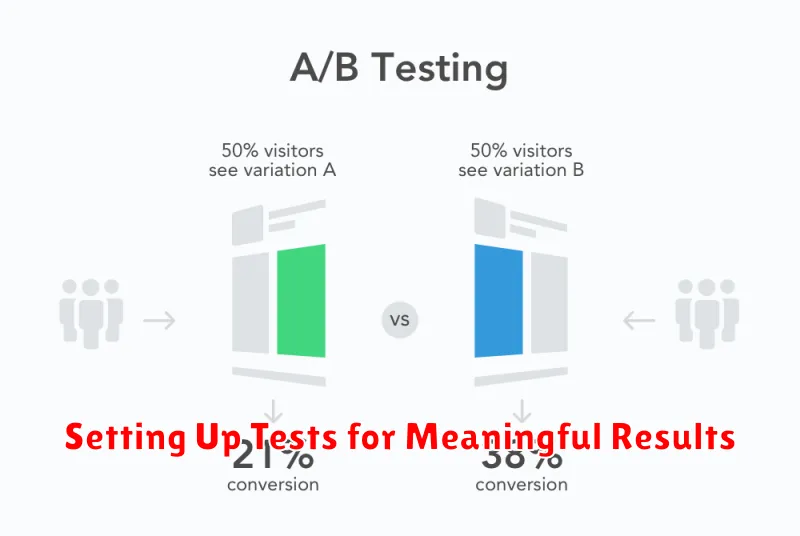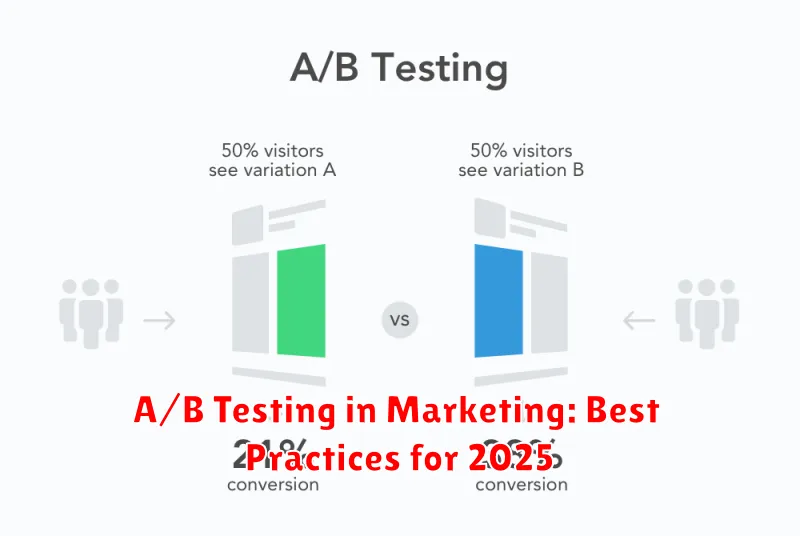In the ever-evolving landscape of digital marketing, staying ahead of the curve is paramount. A/B testing remains a cornerstone of successful marketing strategies in 2025, enabling businesses to optimize campaigns, enhance user experiences, and ultimately drive conversions. This article delves into the best practices for A/B testing in marketing, providing actionable insights to maximize your return on investment (ROI) and achieve significant results. We’ll explore the key elements of effective A/B testing, from formulating a robust hypothesis and selecting the right metrics, to implementing tests and analyzing the resulting data.
Understanding the nuances of A/B testing is crucial for any marketer aiming to refine their strategies and achieve data-driven decision-making. Whether you’re a seasoned expert or new to the concept, this guide will equip you with the knowledge and tools necessary to conduct effective A/B tests in 2025. We’ll cover topics such as determining sample size, minimizing bias, and iterating on your tests for continuous improvement. By implementing these best practices, you can unlock the full potential of A/B testing and propel your marketing efforts to new heights of success in the dynamic digital landscape of 2025 and beyond.
Why A/B Testing Still Matters
In the rapidly evolving digital landscape of 2025, where marketing trends shift constantly, A/B testing remains a cornerstone of successful campaigns. It provides a data-driven approach to optimizing marketing efforts, ensuring resources are used effectively.
A/B testing allows marketers to understand what truly resonates with their target audience. By testing different variations of campaigns, marketers can identify which elements drive the desired outcomes, whether it’s increased click-through rates, higher conversion rates, or improved engagement.
Furthermore, A/B testing fosters continuous improvement. Iterative testing helps refine campaigns over time, ensuring they stay relevant and effective in the face of changing consumer behavior and market dynamics. This ultimately leads to a stronger return on investment (ROI) and a more optimized user experience.
Elements You Can Test (and Why)
A/B testing allows you to experiment with various elements of your marketing campaigns to identify what resonates best with your target audience. Headlines are a crucial element to test, as they often determine whether someone clicks through or not. Testing different phrasing and value propositions can significantly impact your click-through rate.
Call-to-action (CTA) buttons are another essential element to test. Experiment with different button colors, text, and placement to see which variations drive the most conversions. Even subtle changes can produce significant results.
Testing different visual elements, such as images and videos, can also be highly effective. By comparing the performance of different visuals, you can determine which ones are most engaging and lead to higher conversion rates.
Setting Up Tests for Meaningful Results

Setting up A/B tests correctly is crucial for obtaining meaningful results. A poorly configured test can lead to inaccurate conclusions and wasted resources. Start by defining a clear and measurable objective. What specific user behavior or metric are you trying to improve? This could be conversion rate, click-through rate, or average order value.
Next, identify the key elements you want to test. Focus on one variable at a time to isolate its impact. This might include headline variations, call-to-action button designs, or different images. Ensure your sample size is large enough to achieve statistical significance. A larger sample size reduces the margin of error and increases the reliability of your results.
How to Interpret the Data
Once your A/B test is complete, the next crucial step is interpreting the collected data. This involves analyzing the results to determine whether the variation performed significantly better than the control. Look for statistically significant differences in key metrics.
Consider the confidence level and margin of error. A high confidence level (e.g., 95%) indicates a higher probability that the observed results are not due to chance. The margin of error quantifies the uncertainty in your results.
Finally, analyze the practical significance of the results. A statistically significant difference might be small and not worth implementing if it doesn’t translate to a meaningful impact on your business goals.
Common Pitfalls and How to Avoid Them
A/B testing, while powerful, can be susceptible to errors. One common mistake is insufficient sample size, leading to statistically insignificant results. Ensure your test runs long enough to gather sufficient data. Another pitfall is testing too many elements simultaneously. This makes it difficult to isolate the impact of individual changes. Focus on one variable at a time. Finally, ignoring statistical significance can lead to implementing changes based on random chance rather than genuine improvement. Always verify your results meet an acceptable significance level.
Prematurely stopping a test based on early positive results can also be misleading. Stick to your predetermined test duration to avoid skewed conclusions. Furthermore, failing to segment your audience can mask the true impact of your changes. Tailoring tests to specific segments can reveal valuable insights. Lastly, not documenting your tests thoroughly can hinder future learning and replication. Keep clear records of your hypotheses, tested variables, and results.

